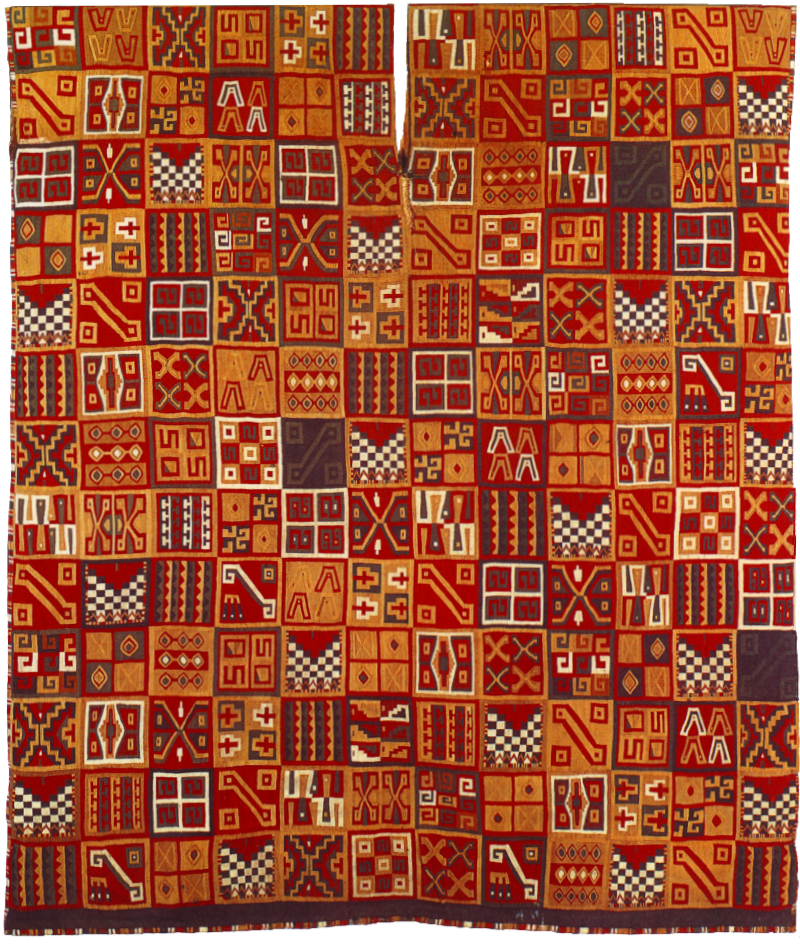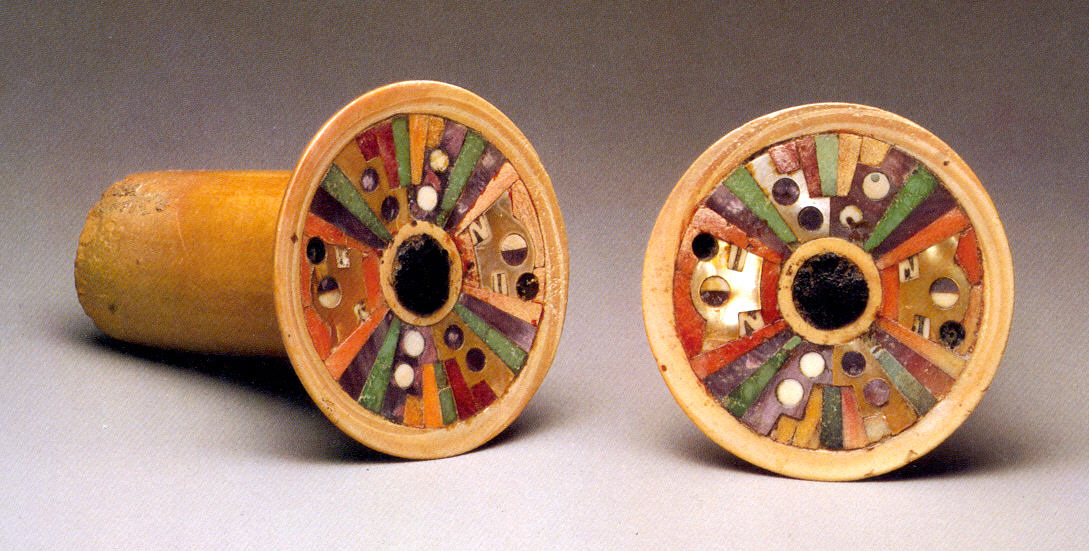|
Larco Museum
The Larco Museum (officially known as Rafael Larco Herrera Archaeological Museum, in es, Museo Arqueológico Rafael Larco Herrera, links=no) is a privately owned museum of pre-Columbian art, located in the Pueblo Libre District of Lima, Peru. The museum is housed in an 18th-century vice-royal building. It showcases chronological galleries that provide a thorough overview of 5,000 years of Peruvian pre-Columbian history. It is well known for its gallery of pre-Columbian erotic pottery. History In 1925, Rafael Larco Herrera acquired a collection of vases and other archaeological pieces from his brother-in-law, Alfredo Hoyle. There were approximately 600 ceramic pieces in all. The arrival of these objects ignited a collector's enthusiasm in his son, Rafael Larco Hoyle. Soon after, Larco Herrera left his son in charge of the collection and those pieces completed the first collection of what would become the Rafael Larco Herrera Museum. During that same year, Larco Hoyle received s ... [...More Info...] [...Related Items...] OR: [Wikipedia] [Google] [Baidu] |
Pueblo Libre
Pueblo Libre (originally called La Magdalena or Old Magdalena to differentiate it from Magdalena del Mar District) is a district of the Lima Province in Peru. Its name, which means ''Free Town'' or ''Free People'', was granted by José de San Martín on April 10, 1822, as a recognition of the patriotism shown by its inhabitants during the Peruvian War of Independence. The district was created by law 9162 on November 5, 1940.Alberto Tauro del Pino, ''Enciclopedia Ilustrada del Perú'', vol. XIII, p. 2133. Pueblo Libre is a middle-class residential community and has the most parks in Lima, although it has several branches of banks, local private universities and major corporations. Background and Landmarks Pueblo Libre was founded in 1557 as Magdalena Vieja, before being renamed ''Free Town'' (Pueblo Libre in Spanish) in 1821 by José de San Martín. The name was given because of the great patriotism and desire for freedom San Martin saw from the people. Simón Bolívar, one of the l ... [...More Info...] [...Related Items...] OR: [Wikipedia] [Google] [Baidu] |
Cupisnique
The Cupisnique culture was a pre-Columbian indigenous culture that flourished from c. 1500 to 500 BC along what now is Peru's northern Pacific coast. The culture had a distinctive style of adobe clay architecture. Artifacts of the culture share artistic styles and religious symbols with the Chavin culture that arose in the same area at a later date. The Cupisnique and the Chavin The relationship between the Chavin culture and the Cupisnique culture is not well understood, and the names are sometimes used interchangeably. For instance, the anthropological scholar, Alana Cordy-Collins, treats as Cupisnique a culture lasting from 1000 – 200 BC, which are the dates some associate with the Chavin culture. Another scholar, Izumi Shimada, calls Cupisnique a possible ancestor of Mochica The Moche civilization (; alternatively, the Mochica culture or the Early, Pre- or Proto- Chimú) flourished in northern Peru with its capital near present-day Moche, Trujillo, Peru from abo ... [...More Info...] [...Related Items...] OR: [Wikipedia] [Google] [Baidu] |
Larco Museum Erotic Art V
Larco is an Italian surname. US Immigration Between 1860 and 1948, most immigrants named ''Larco'' came from Peru, France, and Italy. Many of them sailed across the Atlantic Ocean on the Santa Elisa. Most Larco immigrants to the U.S. arrived in 1929 with New York City being the most popular arrival destination with records of 110 immigrants. Distribution Based on the 2002 United States White Pages, the Larco surname is ranked 113,592 out of 1,778,655 total unique surnames. People with the surname *Rafael Larco Hoyle (b. 1901), Peruvian Archaeologist *Guillermo Larco Cox (b. 1932), Peruvian Civil Engineer and Politician * Luis T. Larco, Peruvian Politician *Michael Angelo Larco (b. 1977), Violist with Los Angeles Philharmonic Places *Larco Museum The Larco Museum (officially known as Rafael Larco Herrera Archaeological Museum, in es, Museo Arqueológico Rafael Larco Herrera, links=no) is a privately owned museum of pre-Columbian art, located in the Pueblo Libre District of Lim ... [...More Info...] [...Related Items...] OR: [Wikipedia] [Google] [Baidu] |
Inca Society
The Inca society was the society of the Inca civilization in Peru. The Inca Empire, which lasted from 1438 to 1533 A.D., represented the height of this civilization. The Inca state was known as the Kingdom of Cusco before 1438. Over the course of the empire, the rulers used conquest and peaceful assimilation to incorporate a large portion of western South America, centered on the Andes mountain ranges. The empire proved relatively short-lived however: by 1533, Atahualpa, the last Sapa Inca (emperor) of the Inca Empire, was killed on the orders of the conquistador Francisco Pizarro, marking the beginning of Spanish rule. The last Inca stronghold, the Neo-Inca State in Vilcabamba, was conquered by the Spanish in 1572. Population Population estimates for the Tawantinsuyu society range from as few as 4.1 million people to more than 36 million. Most estimates are between 6 and 14 million people. The reason for these various estimates is that, while the Inca kept excellent censu ... [...More Info...] [...Related Items...] OR: [Wikipedia] [Google] [Baidu] |
Huari Culture
The Wari ( es, Huari) were a Middle Horizon civilization that flourished in the south-central Andes and coastal area of modern-day Peru, from about 500 to 1000 AD. Wari, as the former capital city was called, is located north-east of the modern city of Ayacucho, Peru. This city was the center of a civilization that covered much of the highlands and coast of modern Peru. The best-preserved remnants, beside the Wari Ruins, are the recently discovered Northern Wari ruins near the city of Chiclayo, and Cerro Baúl in Moquegua. Also well-known are the Wari ruins of Pikillaqta ("Flea Town"), a short distance south-east of Cuzco ''en route'' to Lake Titicaca. However, there is still a debate whether the Wari dominated the Central Coast or the polities on the Central Coast were commercial states capable of interacting with the Wari people without being politically dominated by them. History Archaeological evidence points toward the Wari empire taking control of a number of smal ... [...More Info...] [...Related Items...] OR: [Wikipedia] [Google] [Baidu] |
Tiahuanaco
Tiwanaku ( es, Tiahuanaco or ) is a Pre-Columbian archaeological site in western Bolivia near Lake Titicaca, about 70 kilometers from La Paz, and it is one of the largest sites in South America. Surface remains currently cover around 4 square kilometers and include decorated ceramics, monumental structures, and megalithic blocks. The site's population probably peaked around AD 800 with 10,000 to 20,000 people. The site was first recorded in written history in 1549 by Spanish conquistador Pedro Cieza de León while searching for the southern Inca capital of Qullasuyu. Jesuit chronicler of Peru Bernabé Cobo reported that Tiwanaku's name once was ''taypiqala'', which is Aymara meaning "stone in the center", alluding to the belief that it lay at the center of the world. The name by which Tiwanaku was known to its inhabitants may have been lost as they had no written language. Heggarty and Beresford-Jones suggest that the Puquina language is most likely to have been the language of ... [...More Info...] [...Related Items...] OR: [Wikipedia] [Google] [Baidu] |
Nazca Culture
The Nazca culture (also Nasca) was the archaeological culture that flourished from beside the arid, southern coast of Peru in the river valleys of the Rio Grande de Nazca drainage and the Ica Valley.''The Nasca'' by Helaine Silverman and Donald A. Proulx. Blackwell Publishers. Malden. 2002. Strongly influenced by the preceding Paracas culture, which was known for extremely complex textiles, the Nazca produced an array of crafts and technologies such as ceramics, textiles, and geoglyphs. They are known for two extensive construction projects that would have required the coordination of large groups of laborers: the Nazca Lines, immense designs in the desert whose purpose is unknown, and puquios, underground aqueducts for providing water for irrigation and domestic purposes in the arid environment. Several dozen still function today. The Nazca Province in the Ica Region was named for this people. History Time frame Nazca society developed during the Early Intermediate Perio ... [...More Info...] [...Related Items...] OR: [Wikipedia] [Google] [Baidu] |
Paracas Culture
The Paracas culture was an Andean society existing between approximately 800 BCE and 100 BCE, with an extensive knowledge of irrigation and water management and that made significant contributions in the textile arts. It was located in what today is the Ica Region of Peru. Most information about the lives of the Paracas people comes from excavations at the large seaside Paracas site on the Paracas Peninsula, first formally investigated in the 1920s by Peruvian archaeologist Julio Tello. The ''Paracas Cavernas'' are shaft tombs set into the top of Cerro Colorado, each containing multiple burials. There is evidence that over the centuries when the culture thrived, these tombs were reused. In some cases, the heads of the deceased were taken out, apparently for rituals, and later reburied. The associated ceramics include incised polychrome, "negative" resist decoration, and other wares of the Paracas tradition. The associated textiles include many complex weave structures, as w ... [...More Info...] [...Related Items...] OR: [Wikipedia] [Google] [Baidu] |
Chancay Culture
The Chancay were a pre-Hispanic archeological civilization that developed between the valleys of Fortaleza, Pativilca, Supe, Huaura, Chancay, Chillón, Rimac and Lurín, on the central coast of Peru, from about 1000 to 1470 CE. History Not much is known about the Chancay civilization, which developed in the later part of the Inca Empire. This culture emerged after the fall of the Wari civilization. Parts of the southern Chancay area were conquered by the Chimú in the early 1400s, and by about 1450 CE the Incas were occupying both areas. The Chancay likely had a centralized political structure and formed a small regional state. Thus the Chancay culture declined in the later 15th century, as the Inca Empire expanded into their lands. Occupying the central coast coastal region of Peru, the Chancay were centered mostly in the Chancay and Chillón valleys, although they also occupied other areas such as the Rimac and Lurin valley areas. The center of the Chancay culture was locate ... [...More Info...] [...Related Items...] OR: [Wikipedia] [Google] [Baidu] |
Lima Culture
The Lima culture was an indigenous civilization which existed in modern-day Lima, Peru during the Early Intermediate Period, extending from roughly 100 to 650. This pre-Incan culture, which overlaps with surrounding Paracas, Moche, and Nasca civilizations, was located in the desert coastal strip of Peru in the Chillon, Rimac and Lurin River valleys. It can be difficult to differentiate the Lima culture from surrounding cultures due to both its physical proximity to other, and better documented cultures, in Coastal Peru, and because it is chronologically very close, if not over lapped, by these other cultures as well. These factors all help contribute to the obscurity of the Lima culture, of which much information is still left to be learned. The Lima civilization was known in part for its ceramic artwork, consisting of styles such as Maranga and Interlocking patterns, which show the influence of the nearby Moche culture. Changes in this pottery style during the Middle Horizon Pe ... [...More Info...] [...Related Items...] OR: [Wikipedia] [Google] [Baidu] |





.jpg)
